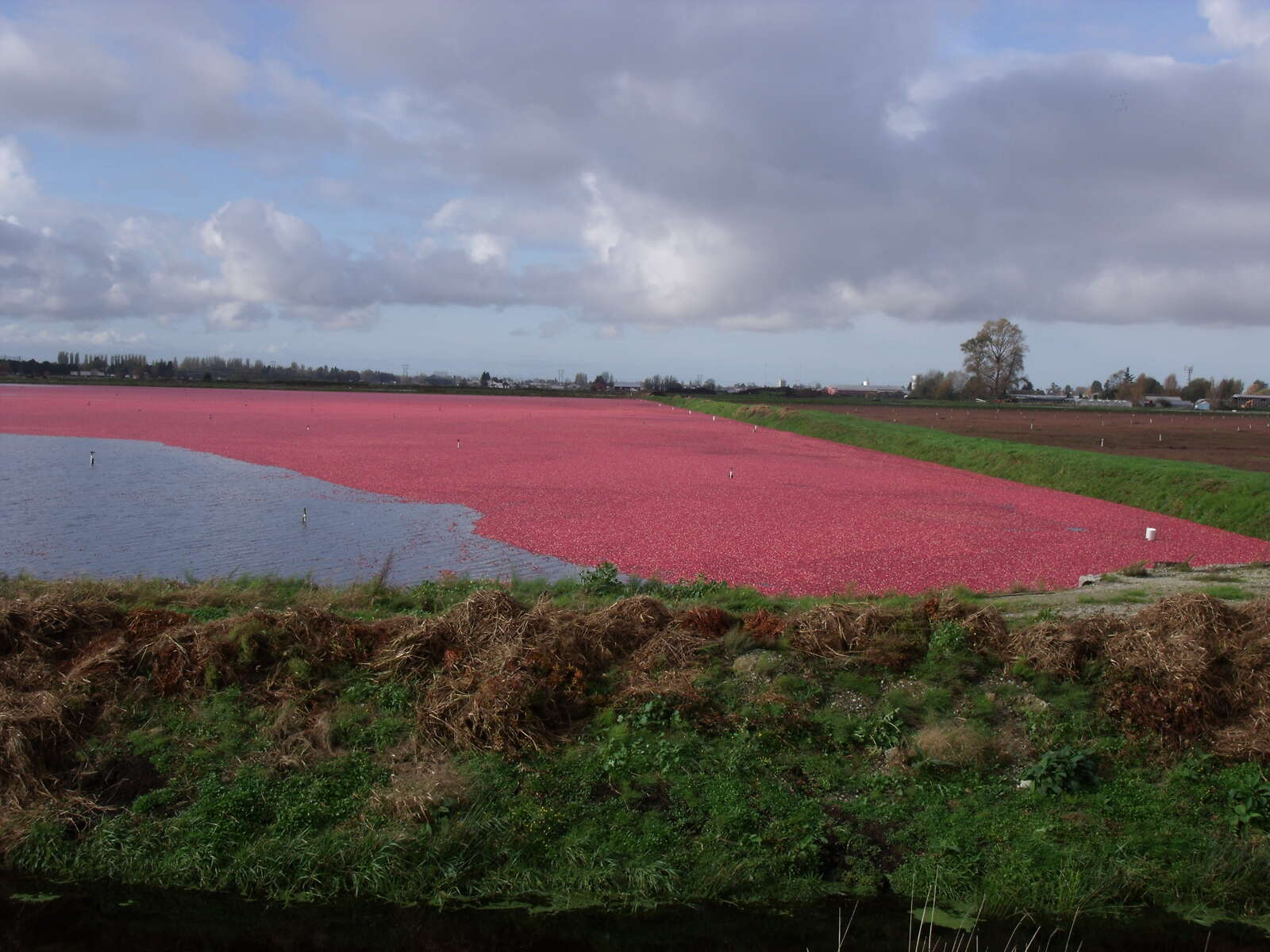
A flood control project which also supports Canada’s farmers in cultivating cranberries
Canada's largest growing area for the “superfruits” is on Lulu Island where KSB pumps are used both for cranberry harvesting and flood alleviation.
The project: Richmond pumping station for flood control in Canada
Cranberries grow on trailing vines and thrive in natural wetlands. However, it is a misconception that cranberries grow under water because all that is seen of the vines are the berries floating on top of the water in the bogs and marshes. What is actually being seen is part of the harvesting process. Wet harvesting involves the farmers using water reels (nicknamed “eggbeaters”) to churn up the water and loosen the berries from the vines. The berries then float to the surface where they can be easily collected together.
Flooding is very important in cranberry cultivation. The growers use it as a means of protecting the plants from the cold winter winds. The area is also flooded for harvesting in the autumn when the water levels in the bogs and marshes need to be raised.
Equally as important to the growing of cranberries is keeping a sufficient level of water in the bogs when temperatures can be high during the summer. The Richmond pumping stations are therefore faced with a dual task: Protecting the city against flooding and ensuring that the farmers have ideal growing conditions.
The customer: Richmond’s Engineering and Public Works Department for flood control in Canada
The Canadian City of Richmond in British Columbia occupies 129.66 square kilometres over 15 islands in the Fraser River delta. On average, it is located only one metre above sea level and flooding has always been a major concern.
The challenges that Richmond’s Engineering and Public Works Department faces are rather unusual, as the occupancy and use of the city’s surface area is split between residential, commercial and agricultural activities.
This means that not only does the Engineering and Public Works Department need to keep the farmers happy, it also needs to keep the water levels down in the island’s drainage channels. It is a delicate balancing act that combines irrigation, drainage and flood control and involves operating a network of pumping stations located around the island. Significant flooding is prevented by the ongoing dike construction scheme together with the construction of new pumping stations and upgrades to existing facilities. Both activities have contributed to the development of the cranberry industry and agricultural crops.
The challenge: Pumps for agriculture and flood control
Cranberry cultivation is very important for the local economy. The flood management scheme ensures that the cultivation sumps contain the necessary fresh water for irrigation and for raising the water level.
Located at strategic intervals around the island, the pumping stations are put into operation as and when required. The ground water levels can be very high during the winter and this situation is exacerbated when there is heavy rainfall and tides are high.
The solution: New and upgraded pumping stations in Richmond
The City of Richmond operates 41 pumping stations providing a total pumping capacity of 85,000 litres per second. A scheme comprising the construction of new pumping stations and upgrades to older facilities is currently under way, with KSB submersible motor pumps being the preferred choice.
“We first brought in KSB submersible motor pumps around 12 years ago and since then they have proved to be durable and reliable. We have experienced very little downtime, maintenance is easy and the customer service is good, plus our staff like working with the pumps.”
Romeo Bicego, Manager, Sewerage and Drainage; Engineering and Public Works.
To date, 28 Amacan pumps have been commissioned and more of these submersible motor pumps have been ordered, bringing KSB’s commitment up to 37 pump sets.
The award-winning Cambie Road pumping station